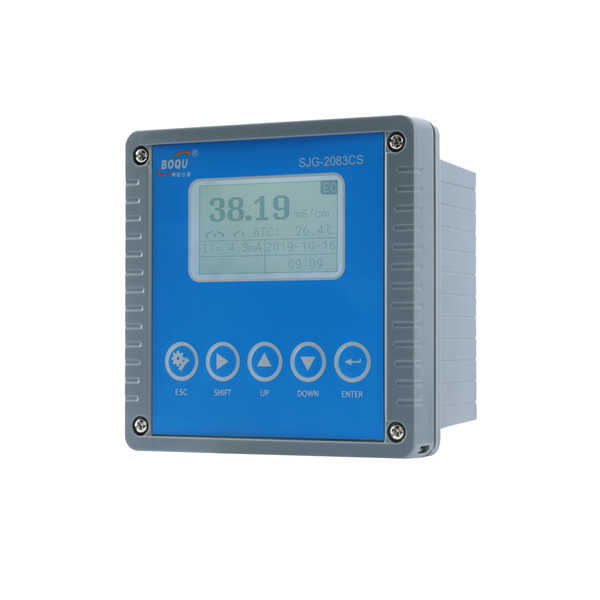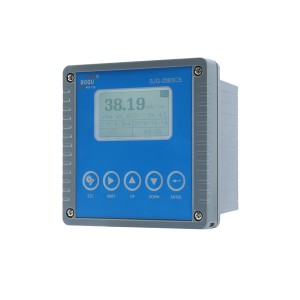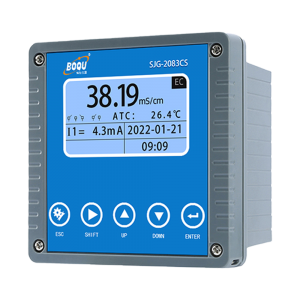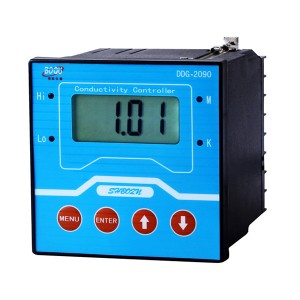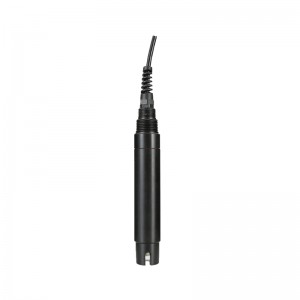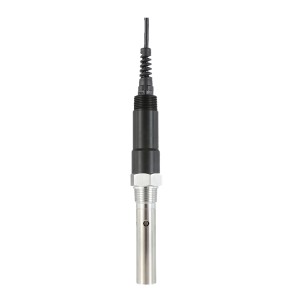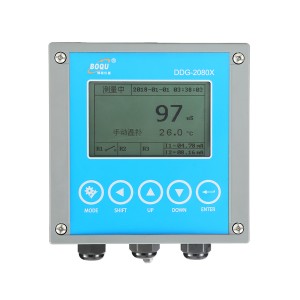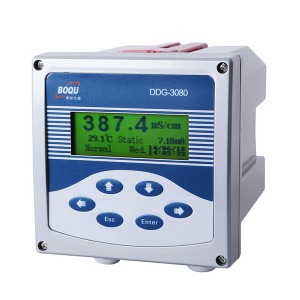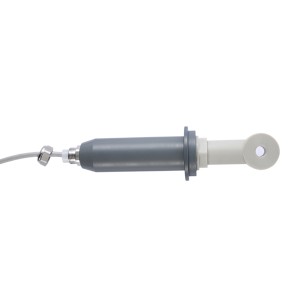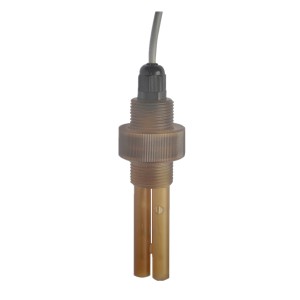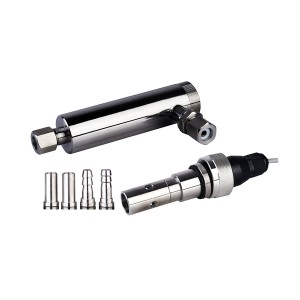| Measurement range | HNO3: 0~25.00% |
| H2SO4: 0~25.00% \ 92%~100% | |
| HCL: 0~20.00% \ 25~40.00)% | |
| NaOH: 0~15.00% \ 20~40.00)% | |
| Accuracy | ±2%F.S |
| Resolution | 0.01% |
| Repeatability | <1% |
| Temperature sensors | Pt1000 et |
| Temperature compensation range | 0~100℃ |
| Output | 4-20mA, RS485(optional) |
| Alarm relay | 2 normally open contacts are optional, AC220V 3A /DC30V 3A |
| Power supply | AC(85~265) V Frequency ( 45~65)Hz |
| Power | ≤15W |
| Overall dimension | 144 mm×144 mm×104 mm; Hole size: 138 mm×138 mm |
| Weight | 0.64kg |
| Protection level | IP65 |
In pure water, a small portion of the molecules lose one hydrogen from the H2O structure, in a process called dissociation. The water thus contains a small number of hydrogen ions, H+, and residual hydroxyl ions, OH-.
There is an equilibrium between the constant formation and dissociation of a small percentage of water molecules.
Hydrogen ions (OH-) in water join with other water molecules to form hydronium ions, H3O+ ions, which are more commonly and simply called hydrogen ions. Since these hydroxyl and hydronium ions are in equilibrium, the solution is neither acidic nor alkaline.
An acid is a substance which donates hydrogen ions into solution, while a base or alkali is one which takes up hydrogen ions.
All substances that contain hydrogen are not acidic as the hydrogen must be present in a state that is easily released, unlike in most organic compounds which bind hydrogen to carbon atoms very tightly. The pH thus helps to quantify the strength of an acid by showing how many hydrogen ions it releases into solution.
Hydrochloric acid is a strong acid because the ionic bond between the hydrogen and the chloride ions is a polar one which is easily dissolved in water, generating many hydrogen ions and making the solution strongly acidic. This is why it has a very low pH. This kind of dissociation within water is also very favorable in terms of energetic gain, which is why it happens so easily.
Weak acids are compounds which do donate hydrogen but not very readily, such as some organic acids. Acetic acid, found in vinegar, for instance, contains a lot of hydrogen but in a carboxylic acid grouping, which holds it in covalent or nonpolar bonds.
As a result, only one of the hydrogens is able to leave the molecule, and even so, there is not much stability gained by donating it.
A base or alkali accepts hydrogen ions, and when added to water, it soaks up the hydrogen ions formed by the dissociation of water so that the balance shifts in favor of the hydroxyl ion concentration, making the solution alkaline or basic.
An example of a common base is sodium hydroxide, or lye, used in making soap. When an acid and an alkali are present in exactly equal molar concentrations, the hydrogen and hydroxyl ions react readily with each other, producing a salt and water, in a reaction called neutralization.

